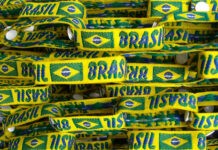With consumer demand for sustainable tissue products increasing, tissue producers need to demonstrate to existing and potential clients a firm commitment to sustainability. Here SCA – the EU’s largest private forest owner – talks to TW about the process to CoC certification.
With consumers driving demand for sustainably sourced tissue products, more brand owners are responding by developing specific environmental polices of their own. As SCA sells heavily into the retail sector, it needs to demonstrate a firm commitment to sustainability and the ability to meet the rising demand for FSCcertified products, or lose out to other companies that could. By becoming CoC certified, it says it has been able to protect its presence in regional and global markets, retaining existing clients, while also expand its market by attracting new ones.
‘The scope of certification does not need to cover all of a company’s activities or products — only those which will allow it to sell certified products.’
A survey of 3,500 global companies into certificate-holder perceptions of FSC (conducted by FSC in 2010) revealed that consumer demand for FSC-certified products was the most important driver behind certification, with 78.6% of respondents confirming that they had chosen to become certified for economic reasons. A further 26.3% said that a commitment to forest management had been the driver and this was also an important consideration to SCA. As Europe’s largest private forest owner, managing some 2.6 million hectares of forest land, the company places considerable emphasis on sustainable forest management and maintaining a strong environmental profile. By becoming CoC-certified, it says it was meeting its own high CSR policy as well as customers’ expectations.
Stewart Begg, director sustainable fibres and public affairs for SCA, says: “SCA has been a forest owner since the 1900s and as the EU’s largest private forest owner, sustainable forestry is in our DNA. As both PEFC and FSC schemes are ways of supporting sustainable forestry, certification was a natural step to take. SCA worked with certification body BM TRADA Certification to achieve FSC and PEFC Chain of Custody certification. With these standards
firmly in place across operational sites worldwide (including tissue mills based in Prudhoe, Chesterfield, Oakenholt and Skelmersdale, and in Europe, Mannheim, Germany, and La Riba (Valls), Spain, SCA says it can send out the right reputational and brand-boosting messages, while also increasing sales.
Begg added: “Once the auditor gets to know the systems it is a lot easier to undertake the audits and BM TRADA auditors work closely with us to understand our systems and have a very good knowledge of the certification schemes. This allows them to help us continually improve our control systems and management processes related to certified fibre purchase.”
As SCA is a forest manager and handler of forest products it holds Forest Management certificates as well as Chain of Custody certificates for both FSC and PEFC. The company has had FSC certification for its own forests since 1999, and at that time had CoC in a few tissue mills as there was not significant volumes of FSC pulp available on the market. BM TRADA became involved with the SCA Tissue business in April 2005. By then more FSC fibre was becoming available and major retailers were requesting FSCcertified tissue. By this point, SCA had already had a number of sites certified but it now required adding further sites across Europe.
One of the first tasks the tissue producer had to undertake in the certification process was to decide what activities, processes and products to include in its certification system. This was necessary to determine its Certification Scope, which is a statement that describes what a company does and, in particular, what products it wishes to sell as FSC-certified and promote with the trademark.
The scope of certification does not need to cover all of a company’s activities or products — only those which will allow it to sell certified products. A company can continue to sell other products in the normal way. SCA’s scope read: “The purchasing, processing, sales and distribution of FSC certified paper hygiene products” and “The purchasing, processing, sales and distribution of PEFC certified paper hygiene products”.
Linked to the Certification Scope is the identification of certified raw material and finished products that form part of the scope. SCA had to identify all raw material inputs that would go into the finished products, preparing a ‘Product Group Schedule’ — a list of the products it wished to sell with a certification claim. There can be as many products in the schedule as the company wishes, and not all the products the company sells have to be in the schedule. However, if they are not in the schedule they cannot be sold as certified.
[box type=”info”]
Chain of Custody certification – the facts
Chain of Custody certification is for companies that process, manufacture or trade in timber-derived products including manufacturers, wholesalers, retailers, sawmills, printers and paper merchants. By implementing and maintaining a robust Chain of Custody system, companies can provide assurances to suppliers and clients that their products are sourced and produced with respect for the highest ecological, social and economic standards.
Certification works throughout the entire supply chain to provide proof of traceability back to well-managed forests, controlled or recycled sources. For a product to qualify for certification, all entities along the supply chain must possess a Chain of Custody certificate. Only then are companies eligible to use the FSC or PEFC label on their products and in product marketing to identify the responsible sourcing of the raw material. Companies taking legal ownership of FSC or PEFC certified products and processing, trading or repacking them need to be FSC certified in order to make a claim.[/box]
FSC CONTROL SYSTEM (FSC Mix Credit)
As with all tissue and paper companies operating a chain of custody system, SCA was required to define and put in place a Control System to demonstrate how certified products would be identified throughout all stages of production.
Both FSC and PEFC have defined three alternative control systems and use specific terminology for these systems. The type of control system used largely depends on whether the company seeking certification can buy exclusively certified products or will have to mix certified and other material to produce its product.
SCA chose to operate under the FSC “credit” control system, which is ideal for tissue mills. The credit system involves the mixing of certified and non-certified raw material: blending FSC virgin material with FSC controlled virgin post-consumer and pre-consumer recovered fibre. (SCA must follow the FSC standard on controlled material to demonstrate to its certification body that the wood did not come from ‘unacceptable’ sources and meets the requirements of the standard).
‘SCA found that the increase in availability of FSC fibre was being matched by ever increasing demand, particularly from the supermarket sector.’
Credit lasts for 12 months and is accumulated by the purchasing of certified material that is subsequently used in the production batch. As with a bank account, the more input that is certified, the more the credit balance increases. This balance only reduces when the company sells a finished product with a credit claim and deducts the volume or weight of that product from the credit balance.
Once the credit is used up, SCA can no longer sell products with a credit claim until further certified raw material is purchased. Therefore the incentive is to keep the account constantly in a positive balance. Inputs can be added when a company takes legal ownership or physical possession, but the company can only sell product from a positive balance.
THE CREDIT SYSTEM OFFERED THE FOLLOWING BENEFIT FOR SCA
The first advantage concerned supply of FSC-certified inputs. The credit system allows a company to operate with a credit balance so should an unexpected delay be encountered in the delivery of certified pulp (i.e supplying pulp mill forced to close due to earthquake damage) a company can continue to supply FSC articles as long as they have the credit in the system.
Begg says: “Especially in the early days, there were very few suppliers of certified wood so we had to understand where we could obtain it and had to undertake risk assessments which were required by the certification body for the “controlled material” fibre. Now a number of suppliers have FSC certified and Controlled Wood certification. We went for a credit system because that was a better fit at the time when supply was so limited.
SUPPLIER ASSESSMENT SYSTEM
However, SCA found that the increase in availability of FSC fibre was being matched by ever increasing demand, particularly from the supermarket sector. To cater for this SCA strengthened its purchasing policy by introducing a Supplier Assessment System governed by a Wood Sourcing Policy for the whole of SCA Europe. In the last four years there has been a steady increase in the availability of FSC fibre but we still need more!
During this time there have been substantial changes to the SCA control of FSC inputs and outputs, which has led to:
- All inputs now being either FSC certified, controlled material or recycled (both pre and postconsumer).
- Even with this assurance the SCA 3-stage supplier appraisal continues.
- Without validation by Global Sourcing fibre team no pulps can be bought. At any one time there is full visibility of pulps in the mills, pulps in transit and pulps at the docks.
- There is real time information on FSC tissue production.
- Sales codes and descriptions have been standardised and managed centrally.
Begg adds: “By taking central control over all aspects of the CoC system, the likelihood of mistakes is minimal. The strength of the central system is it allows the production mills to run as normal, pulp recipes and packaging requirements for FSC or PEFC articles follow the same traceability process as non-certified articles.”
[box type=”info”] What are FSC, PEFC and BM Trada?
FSC
Forest Stewardship Council® (FSC) is “an independent, international organisation that promotes the development of environmentally compatible, socially beneficial and financially sound practices for management of the world’s forests”. It says: “FSC has established 10 fundamental principles and 56 criteria for responsible forest management. These call for protection and preservation of biological diversity and other natural resources but also support economically sound forestry operations that contribute to the development of the local community. The FSC label guarantees the products come from sustainable forestry and controlled recycling processes.”
PEFC
PEFC was formed in 1999 and is “an international, non-governmental umbrella organisation dedicated to the assessment and mutual recognition of national forest certification systems for sustainable forest management through independent third-party certification. As such, PEFC leave enforcement of the standard to respective national bodies”.
BM TRADA
BM TRADA Certification is “a major international multi-sector certification body that claims to have the widest scope of UKAS-accredited schemes (including environmental management and quality management certification) and a leading reputation in responsible sourcing and sustainable Chain of Custody certification to the timber and construction industries”. It added that: “Working with BM TRADA enables businesses to demonstrate their commitment to best environment practice through independent thirdparty verification.” The body has nearly 40 years of experience in certification. BM TRADA has worked with 14,000 businesses in 70 countries.
For more information, visit www.bmtrada.com.
[/box]
ASSESSMENT
CoC Certification was completed in two stages. As with all companies, SCA had to go through an initial evaluation in order to verify compliance with the standards and thereby achieve certification.
The main objectives of the assessment were to evaluate and document the implementation and effectiveness of its Chain of Custody management system, to cover:
- implementation of all applicable elements of the relevant standards
- information and evidence about compliance to all requirements of the applicable chain of custody standard
- operational control of the systems and processes
- internal auditing and management review, where applicable
- management roles and responsibilities
- training
- documentary controls and claims. The auditor also spoke to all staff involved in the management, supervision or operation of the Chain of Custody system to ensure that:
- they have received appropriate training
- they have understood the training
- they are applying their training to their role in a competent and effective manner.
Companies such as SCA that operate more than one site, and have a head office centrally administering and monitoring control and reporting systems, can have Chain of Custody certification across as many of their sites as they wish through multi-site CoC Certification.
When applying for multi-site certification it was important for SCA to clearly identify the central office that would be responsible for controlling the Chain of Custody systems and ensuring a system was in place to carry out internal audits at all participating sites annually.
‘Certification has allowed us to have a more formalised system through which to assess our supply chain of pulp suppliers’
In addition to being recognised as a multi-site operation, and in order to be eligible to apply for Chain of Custody multi-site certification, SCA had to satisfy the following criteria:
- the central office shall be or act on behalf of an independent legal entity which represents the multi-site organisation
- all participating sites have a legal and/or contractual relationship with the central office requiring regular reporting and communication with the central office
- all participating sites are subject to a common, centrally administered and documented internal control and reporting system, which is subject to continual surveillance by the central office
On the basis of meeting these criteria the sites could be sampled on an annual basis so only the square root of the number of sites needed to be subject to site audits. Begg says: “In the early days CoC Certification of our tissue sites began with a few individual sites audited by different auditors working for different certification bodies. We had no concerns about rolling out certification to all sites and went for a multi-site system which has really benefited us. The system is maintained and controlled by the Central Office giving an overview of all purchases and sales by the individual sites. Although sites still have to record these transactions, a new IT system allows Central Office to see all these purchases and sales centrally so it gives an extra level of audit and improves levels of control across the group.”
He adds: “Multi-site certification didn’t really require a lot of work, time and resources to implement as the majority of the sites already had CoC. The learning curve in the certification process was going from single to multi-site certification. When each country was running its own system, local interpretation of the standards in different sites and with different auditors was a problem when trying to operate a single approach across our international operations. Now we are more confident that certification is understood globally and are in the process of transferring our Personal Care division to the multi-site certificate.”
At the end of stage one, the auditor summarised the outcome of the audit, including any areas of noncompliance, and also indicated what recommendation they would be making as to whether or not SCA should go forward for certification. They then prepared an assessment report. This report was reviewed by a certification officer to ensure that the auditor had covered all relevant elements of the standard and with this being the case, the certification officer made the final certification decision. For SCA it was a positive decision and the certification body BM TRADA then issued a Chain of Custody certificate, valid for five years with certification maintained through annual surveillance visits.
SCA opted for both FSC and PEFC certification, and though both come with their own specific requirements, generally speaking there are only a few differences between the standards. As a certified company, SCA has permission to use the schemes’ internationally recognised trademarks on approved products.
‘By gaining CoC certification you will understand the supply chain and know where your raw material comes from, giving you and your customers confidence’
THE BENEFITS OF CHAIN OF CUSTODY CERTIFICATION
According to the FSC global certificate holder survey, the key benefits of certification were identified as access to new clients (30.6%), reputational (17.4%), client retention (13.9%), increased revenue (7.2%) and increased sales to existing clients (6.9%). Begg says that CoC certification gave SCA a competitive edge and said: “Embrace certification as a tool for greater understanding and management of your fibre supply chain. Certification has allowed us to have a more formalised system through which to assess our supply chain of pulp suppliers, and driven us to better understand the issues of sustainable forestry and the global supply chain. The real benefit of certification is it gives us the credibility and assurance that certified fibres purchased are from well-managed forests and that we are doing the right thing by our customers.”
He adds: “By gaining CoC certification you will understand the supply chain and know where your raw material comes from, giving you and your customers confidence. You will also gain a greater appreciation of the social and environmental aspects of sustainable forestry which the FSC and PEFC standards endorse, with the reputational benefits that brings to a company.”
FSC® A000503
[box]SCA factfile
Sales in 100 countries
Brands include TENA, Tork, Lotus, Libresse, Tempo, Libero
Sales in 2012 equalled £8.4billion
The Group develops and produces sustainable personal care, tissue and forest products
Number two position in global consumer tissue market
TENA and Tork leading global billion-euro brands for Incontinence products and Away-From-Home tissue
SCA was founded in 1929, has its headquarters in Stockholm, Sweden, and is listed on NASDAQ OMX Stockholm[/box]






























